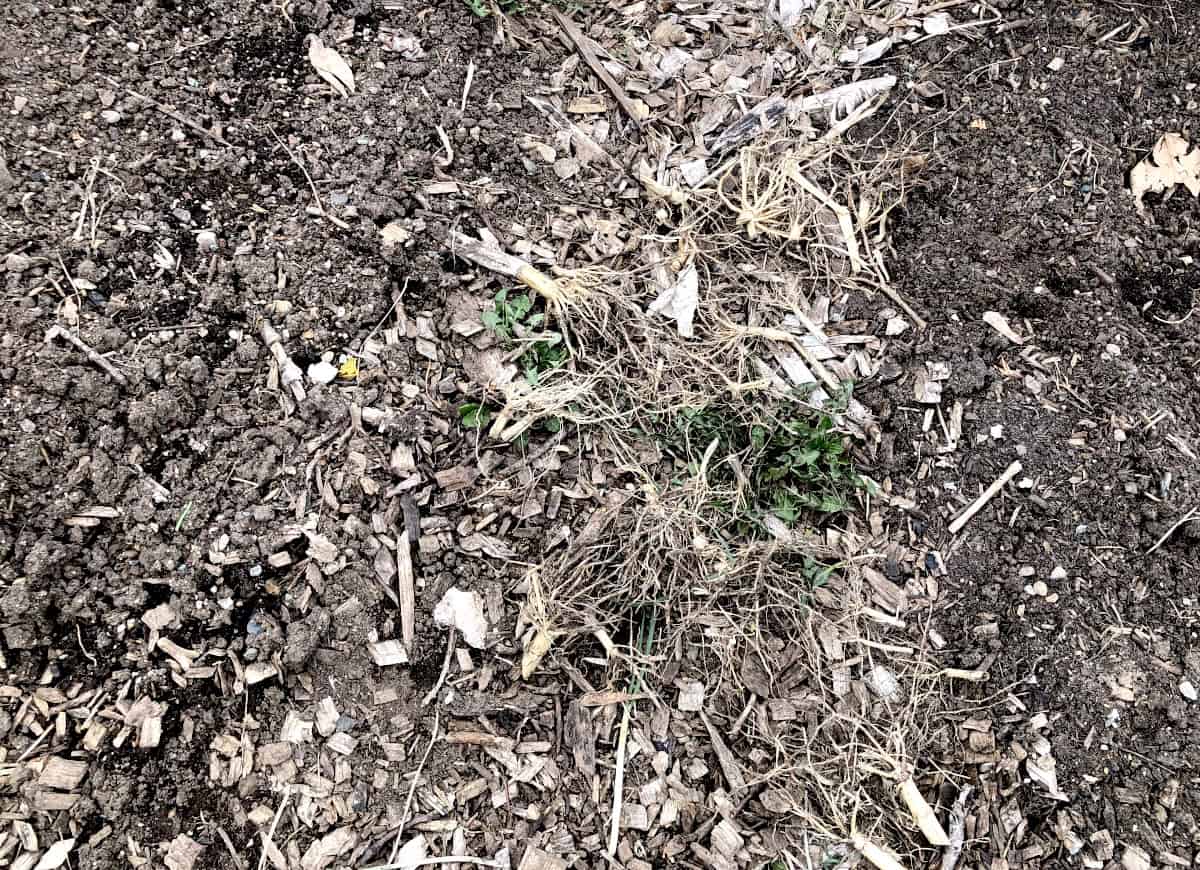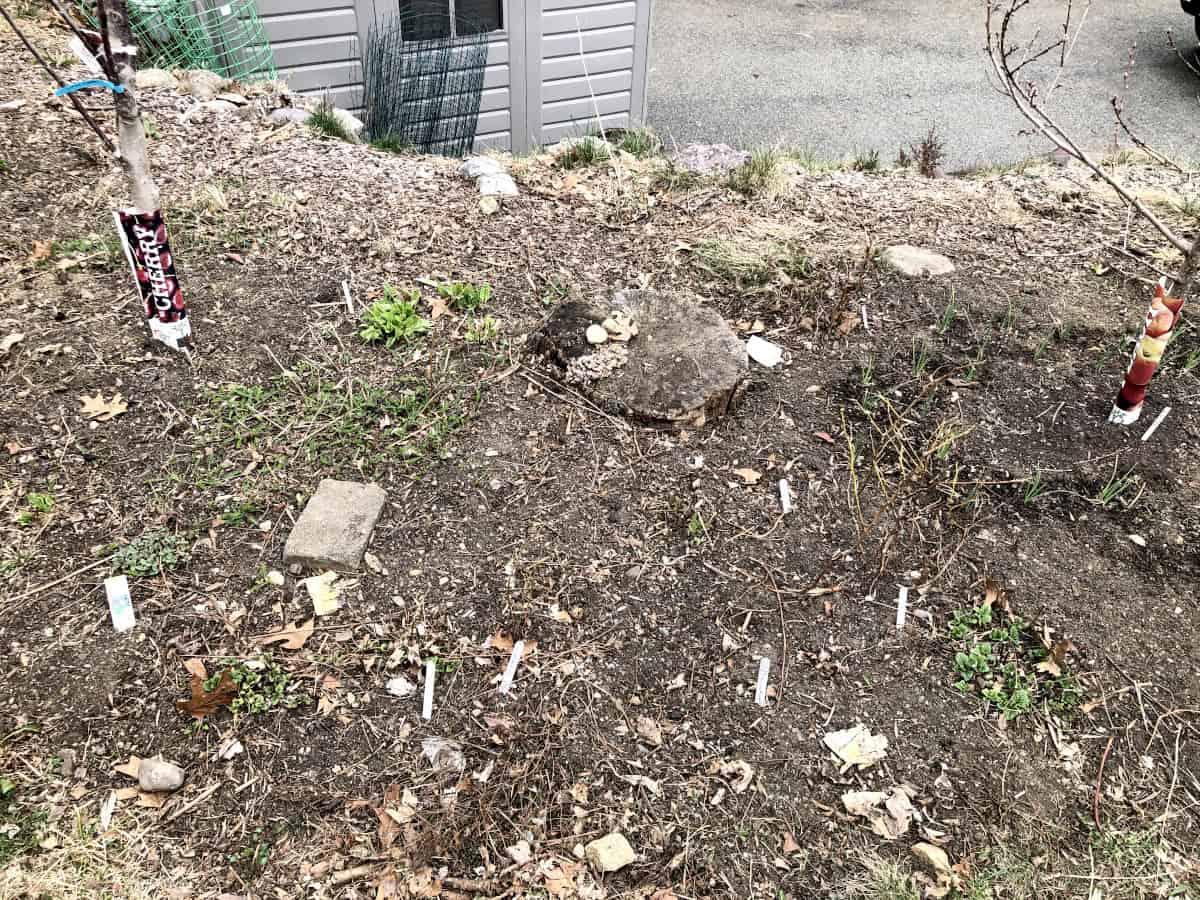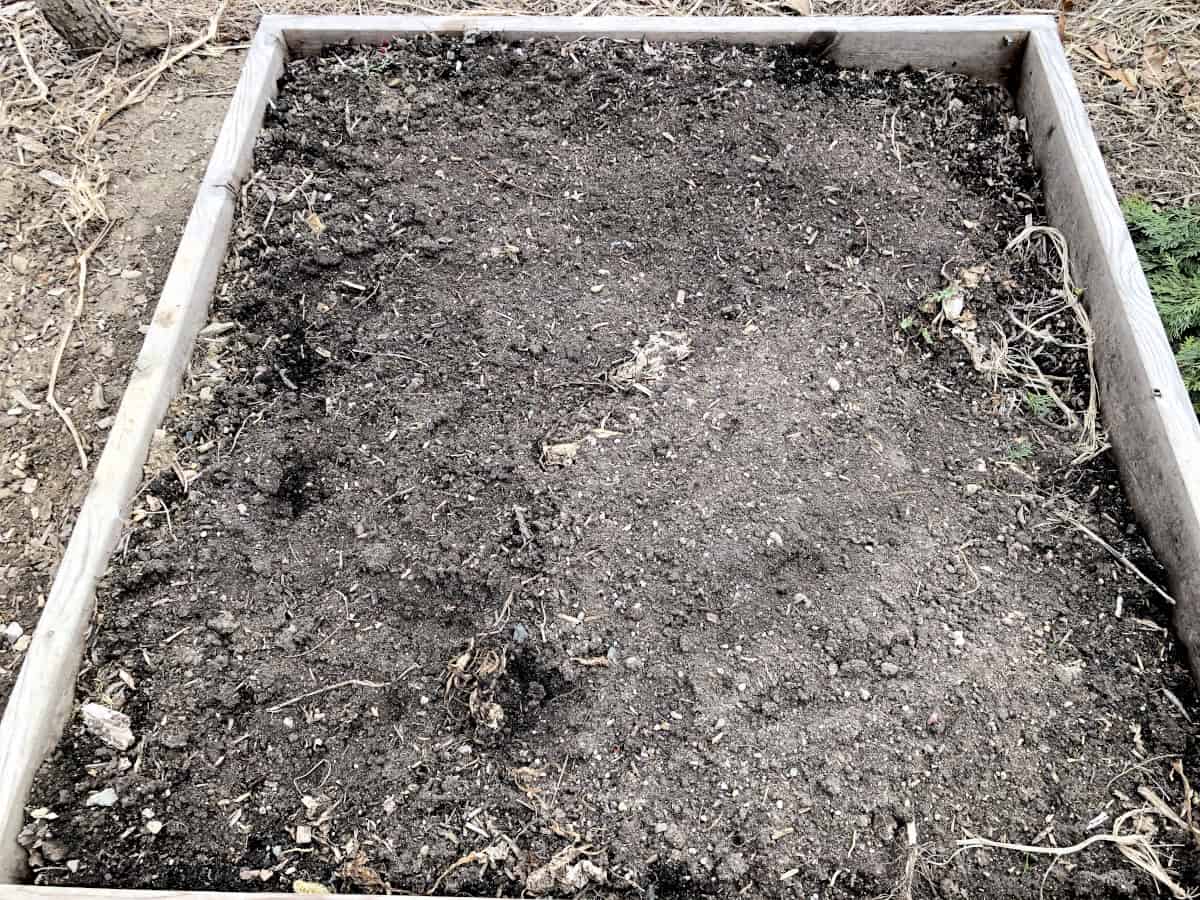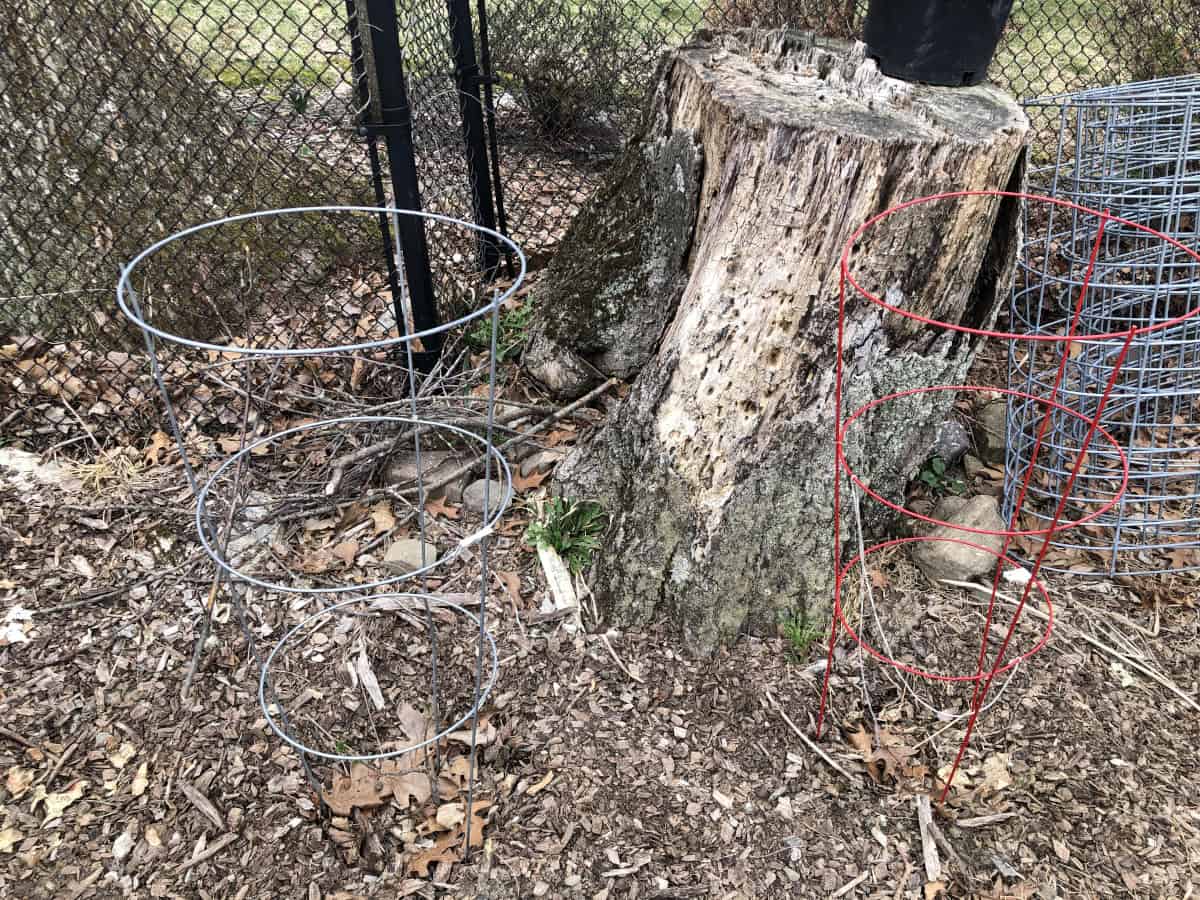Some roots that decay very slowly are the roots of corn, which from my experience will remain still intact after the winter months. I pull them out before planting them in spring. Other plants like squash, cucumbers, and lettuce have very soft roots and they will decay over winter. In spring, they will be nowhere to be found.
If new plants are being planted after the winter and there are old fibrous roots still left in the garden beds, these roots can now be removed. Those are so fibrous and strong that they did not have time to decay over winter, they can be removed before planting. Only the most fibrous part of the roots was left, the softer part of the roots decayed over winter and became the food source for the soil organisms. If new plants are being planted during the growing season and there are roots left from the recent harvest plant, they can be left in the ground to decay. As they decay, they will feed soil organisms, improve the soil structure, and feed newly planted plants. Because some plants have very strong and fibrous roots, twist the plant while pushing the roots at the base of the soil. Twist the stalk above the ground, and push down the root part. Then pull while still pressing the roots down. The soft parts of the roots that will decay quickly will be left underground, while the hard and fibrous parts of the root will be pulled out and removed to make more space for the roots of the new plants.

A GOOD READ: Should I leave dead plants in the garden?
Can you plant over old roots?
Yes, plants can be planted over old roots, but only over small and soft ones, or roots that can not be removed like old tree roots. The strong and fibrous roots like that of the corn plants, that need more time to decay should be removed to make more space for the roots of the new plants.

I do not remove the roots of all of my old plants. As I harvest, I pull the old plant by the stem in a twisting motion while pushing the roots down at the base of the plant. The soft roots will crack and break and stay underground, while the strong roots will stay attached to the stalk. Then by pulling motion I pull the plant with old strong roots out. The softest roots that broke off will remain underground to decay, and the strong roots that will need more time to decay be removed and added to the compost pile.
How do you get old roots out of the soil?
Some old roots are easy to pull out by hand using twisting and pulling motions. A garden shovel or a spade might be used to dig out stronger old roots that are more fibrous or woody. Put the garden shovel couple of inches away from the roots and using a leg and your weight, push the shovel down as deep as the roots are deep. Uproot the roots by lifting the soil with the roots out of the ground. If the roots are very strong use the same method of digging around the perimeter of the whole root system to loosen the roots before pushing them out using the shovel. Some old roots are thick and woody roots need to be cut up and removed piece by piece. Uncover the roots by pulling the soil away from them. Cut the roots into couple inch long pieces using a shovel, a spade, or even a pruning saw or shears, depending on the width of the roots. Remove roots piece by piece after being cut up.
I planted lots of raspberry canes and blackberries where I had old oak trees growing previously. They had strong, thick, and woody roots. Some canes I planted next to the tree roots, some over the roots, and some roots which were about one inch thick I was able to break using a garden shovel. If you are starting a garden, or maintaining a garden, a garden shovel is one of the must-have tools. A garden shovel is a to-go tool when digging holes to plant trees, bushes, canes, or larger established plants that need a large hole to be planted in. I use a shovel with a wooden handle and literary use it not only for digging, but also for removing dead plants, and roots, loosening compacted soil, and tilling, and shoveling soil, and compost. I also use it to amend my soil with amendments. It is a must-have tool for every gardener.
Here is the one I recommend. It has a beech wood handle and a D-shape handle on top to hang it. The metal part is a round shape, pointy at the end so it is easier to break ground, chunks, and roots.
A GOOD READ: How do I clear my garden in the spring?
Should you cut off old roots when repotting?
If the old roots of the plant are decaying, moldy, overgrown or grow in a thick circle creating a root ball, then loosen the roots and trim the old roots before replanting. Loosening and trimming the old roots the plant will be able to grow new roots and be able to absorb nutrients better. Aeration and drainage will be also promoted. Always use clean sharp shears, or knives to cut or prune roots.
I repot all my amaryllises flowers. I have a collection of more than 30 amaryllises, in various colors, and as I prepare each of them for dormancy, I cut off all their old roots. After the dormancy period, I repot them. I use garden shears to cut off the old roots. I garden sheers to prune roses, my fruit trees, and bushes. They also are a must tool for every gardener. I use garden shears to remove annual vegetables as well, like thick stems of broccoli after harvest, fibrous stems of corn, and such. They are a must when removing pest-damaged, or mold-affected leaves. Do not forget to clear your garden shears and tools after your work is done using affordable but effective isopropyl alcohol.
How long does it take for old roots to decompose?
The old roots of most annual vegetables and plants decay over a couple of months, or over a winter season because the roots of annuals are softer. More fibrous and woody roots of perennial plants might take two years or more. The roots of the trees take over five years to decay before a new tree can be planted on the ground that was beneath the foliage of the old tree.
If in doubt if the roots below the soil are decomposed in full, uncover or dig the soil up to learn whether the roots are decomposed.
How do you plant over roots?
If the roots were soft and most of the root is decayed, just plant over them directly. If the roots are hard to remove, like tree roots that are still in the ground, plant on top of them. Use raised beds to plant over large, woody roots that are hard to remove. Make a pile of at least 6 inches of soil on top of the old roots and plant in the soil. Most plants grow well in a minimum of 6 inches of soil. Eventually, as the old roots decay and provide nutrients to the new roots that will grow from newly planted plants. If planting an inground garden and the roots are in the way, just plant around the roots, the roots of the new plants will find a way to grow in the soil below.

I have large oak and maple trees around the property line. Some were cut down for safety, but the root system is still in the ground. The roots are large, thick, and woody. Impossible to dig out. I chose to plant over roots using raised garden beds. Some perennials I planted next to the roots because the plants will eventually find the right way around the old tree roots to spread.
What to do when roots are too long?
Too long roots can be pruned. Prune too-long roots using garden shears or a sharp knife. If the roots are tangled in a root ball, loosen the root ball and prune roots that are too long, roots that are old, withered, moldy, or broken. Leave enough roots for the plant to thrive and grow. Do not damage the remaining roots attached to the stem of the plants.
Can a plant regrow from just roots?
Yes, a plant can regrow from just roots. Perennial plants that are well established and have strong root systems below the ground can regrow very well and fast just from roots. Many plants can grow roots from just a stem and establish themselves again. Most annual plants do not regrow from roots because they have only one life cycle and die after completing their life cycle. If the life cycle is cut off by harvesting the whole plant leaving only roots, most annuals will not regrow from just roots.
In a conclusion, remove the roots that are hard to plant around, roots that are hard, fibrous, moldy, or diseased so they do not spread to the healthy plants. I leave the roots that are soft to decay and plant around them or over them. If I cannot remove the roots, I work with them.

The best way to start seeds outside
What vegetables are best direct sow?

